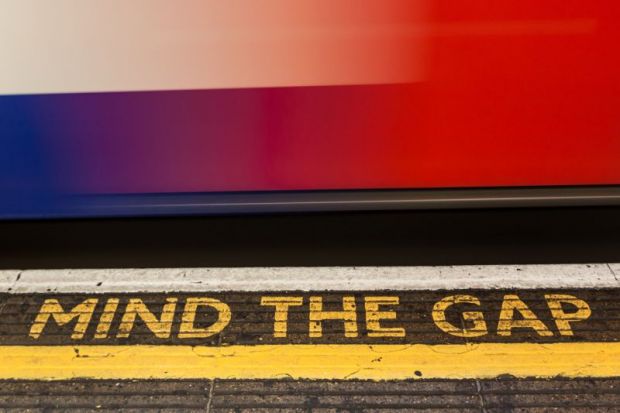A large drop in the attainment gap between white and ethnic minority undergraduates in the UK may reflect universities using what some might see as “fairer and more flexible” marking policies in the midst of the pandemic, a new report suggests.
According to the report from Advance HE, 77.2 per cent of black, Asian and minority ethnic students gained a first or a 2:1 for their bachelor’s degree in 2019-20, up from 68 per cent the year before.
This represented a closing in the awarding gap with white students – 87.1 per cent of whom got a first or 2:1 in 2019-20 – of 3.4 percentage points, a far higher drop than the average fall of 0.3 percentage points that has been seen in previous years.
The 2019-20 academic year was the first to be heavily disrupted by the Covid-19 pandemic, with learning suddenly moved online and many end-of-year exams cancelled.
As a result, universities introduced “no detriment” policies in determining final classifications for students, such as by allowing previous course marks to be more heavily taken into account. The move was accompanied by a huge uplift in the awarding of top honours, with the overall proportion of firsts rising 7 percentage points to 35 per cent.
The report says that while “we cannot be sure about what has caused this acceleration of reduction in the awarding gaps” between white and BAME students, it was likely there was some association with no-detriment policies given how this probably contributed to the general increase in firsts and 2:1s.
“The decrease in the white-Black, Asian and minority ethnic awarding gap possibly reflects the greater and, as some would claim, fairer and more flexible use of results from coursework and continuous exams to determine awards. It is unclear, though, whether this signals a new trend,” the report states.
It adds that other possible reasons for the reduced gap “should not be dismissed. For example, it could be that significant awareness raising and action around race equality in HE has finally come to fruition, or that remote learning suits certain students better.”
However, the data also show that firsts were the main driver for the remaining attainment gap with 39 per cent of white students getting this mark compared with 29 per cent of BAME students.
A slightly higher share of BAME students actually gained a 2:1 than their white counterparts in 2019-20: 48.5 per cent compared with 48.2 per cent. This is a reversal from the year before when 49.9 per cent of white students gained a 2:1 compared with 46.9 per cent of BAME students.
The data in the latest report show that the attainment gap continues to be most pronounced for black students, with a difference of around 19 percentage points compared with white learners for firsts and 2:1s. The gap was narrowest for those with Chinese and Indian backgrounds (each 2.8 percentage points).
Meanwhile, the data also show the overall BAME attainment gap varied considerably across different universities, from under 5 percentage points at 24 institutions to more than 20 percentage points at 16 institutions. The report shows that the most selective universities tended to have the smallest gaps.
The report shows how attainment gaps correlate strongly with socioeconomic background, with the biggest gaps seen in institutions with the highest shares of students from areas of low higher-education participation.
However, a deeper statistical analysis also reveals that even after accounting for other factors like a students’ home area, their prior attainment and their parents’ education, the attainment gap – particularly for black students – remains.
It says this analysis should be helpful to institutions in understanding that “racialised inequalities are persistent and entrenched” and that “the ethnicity awarding gaps cannot be ‘explained away’ by other factors”.
“Institutional and individual conversations should refocus on understanding specific and intersectional racialised experiences of students, rather than trying to look ‘elsewhere’ for an explanation,” the report adds.
It also concludes that “because the gaps vary so widely across institutions, and even departments, and as significant progress was made between 2018-19 and 2019-20, we can argue that concerted efforts from institutions can make a difference in closing the ethnicity awarding gaps”.
Register to continue
Why register?
- Registration is free and only takes a moment
- Once registered, you can read 3 articles a month
- Sign up for our newsletter
Subscribe
Or subscribe for unlimited access to:
- Unlimited access to news, views, insights & reviews
- Digital editions
- Digital access to THE’s university and college rankings analysis
Already registered or a current subscriber? Login








